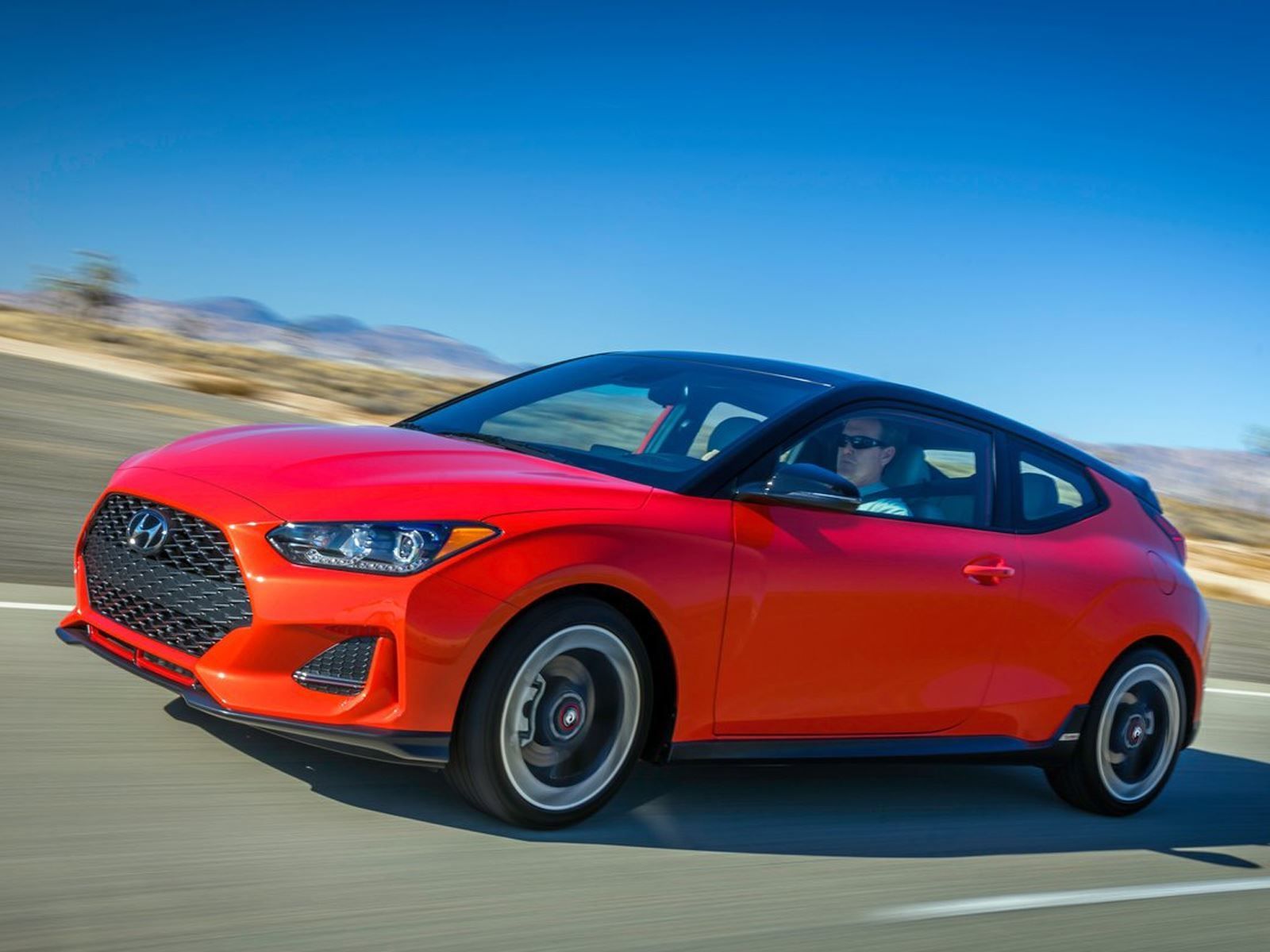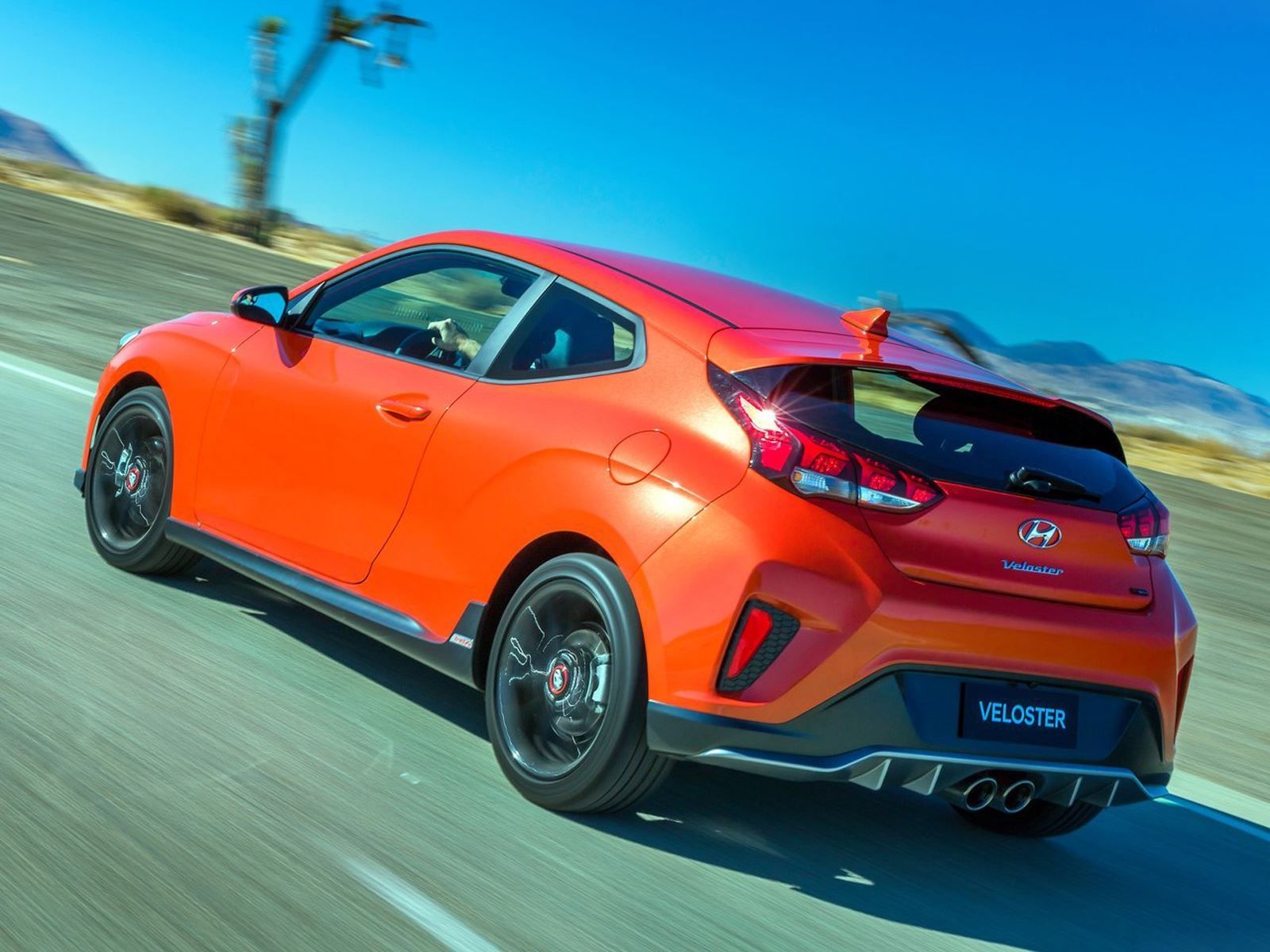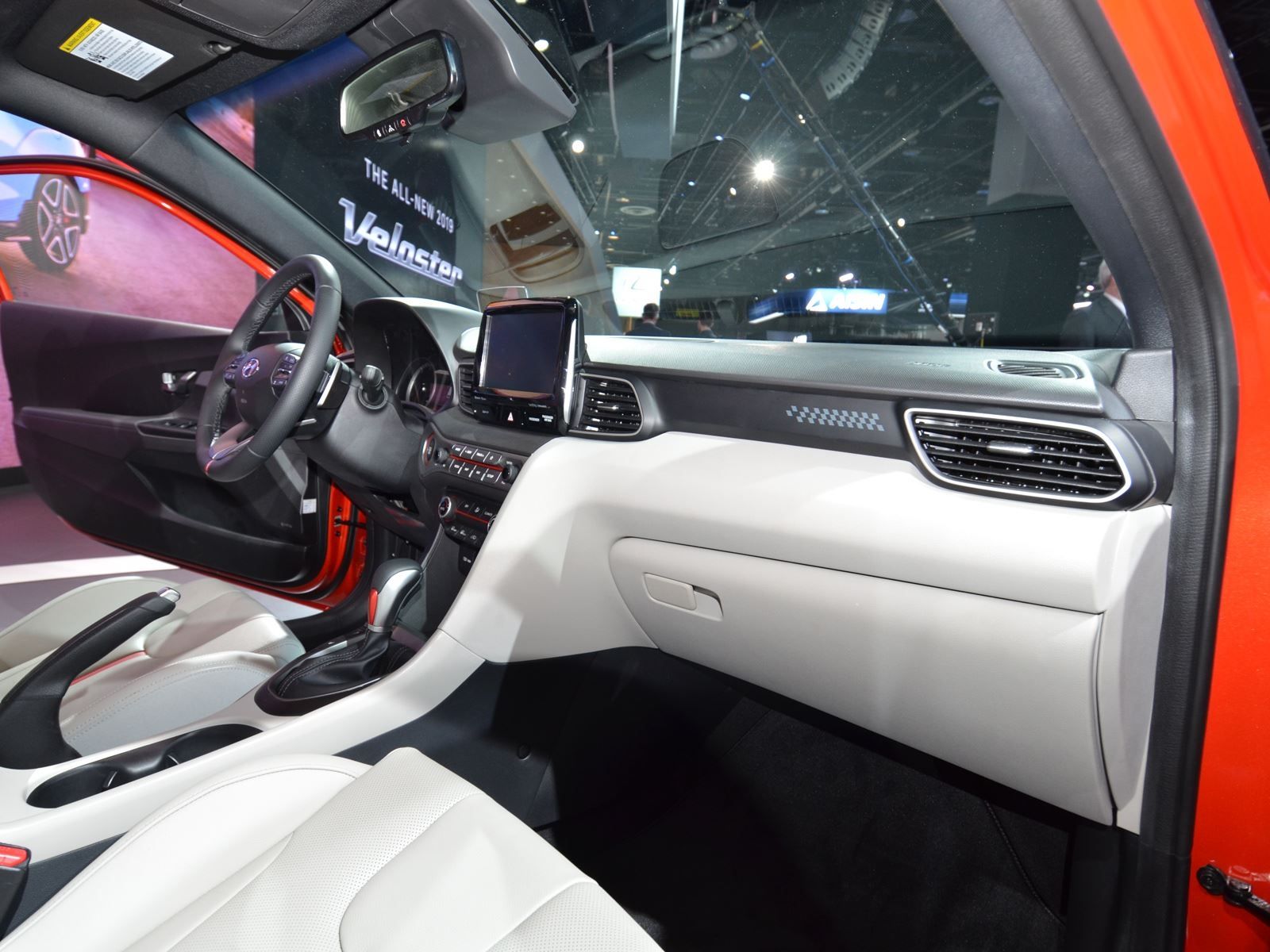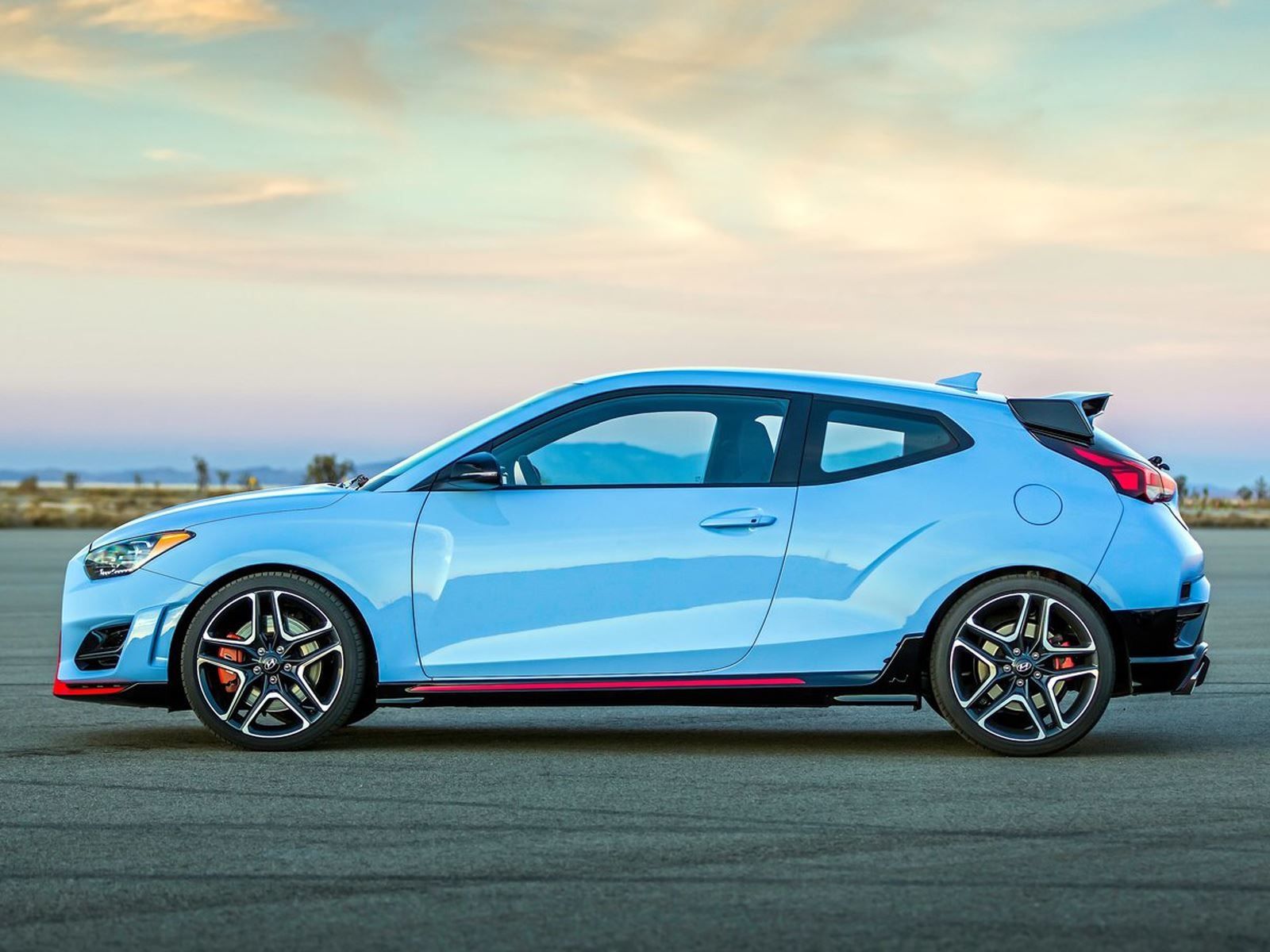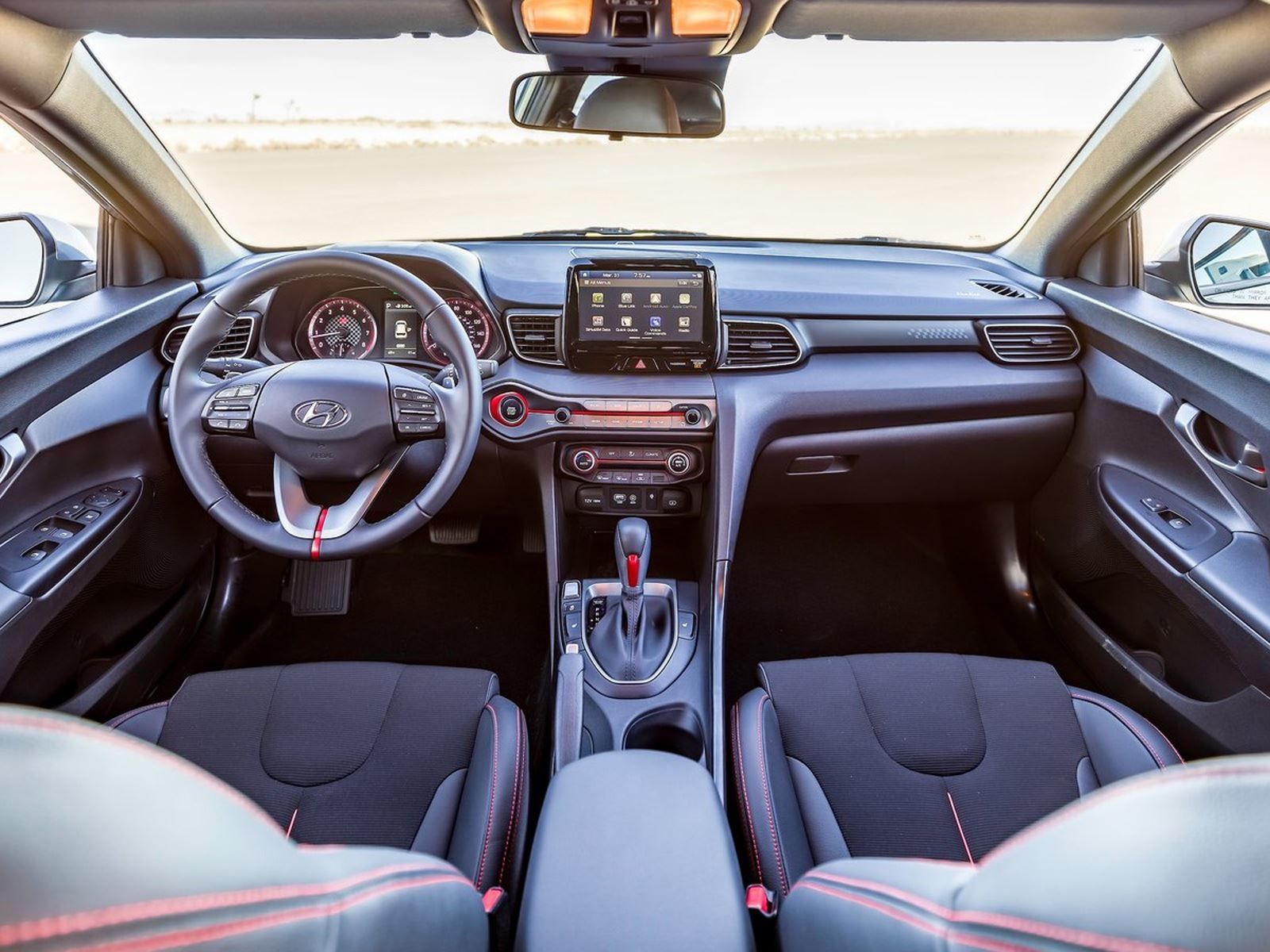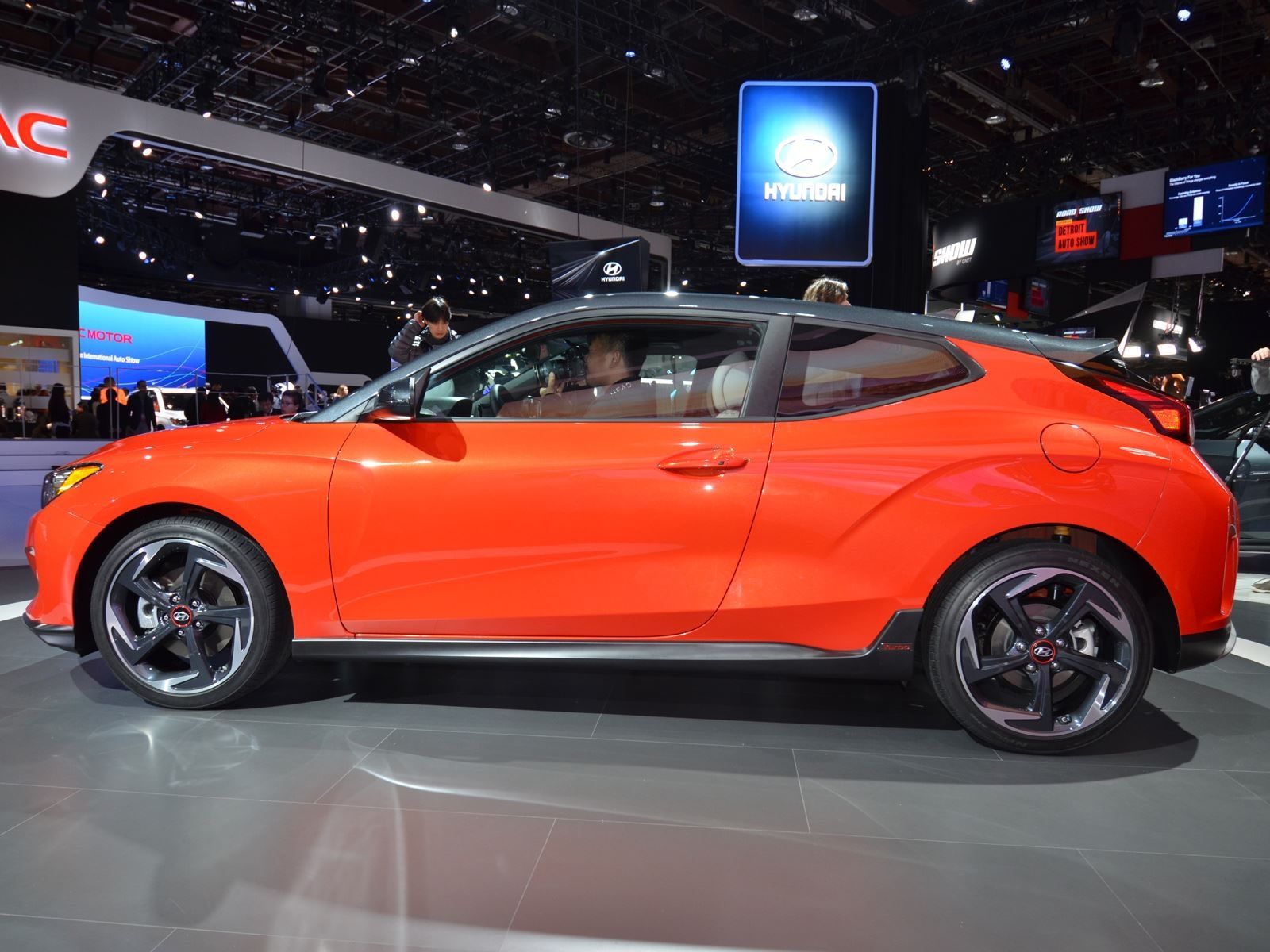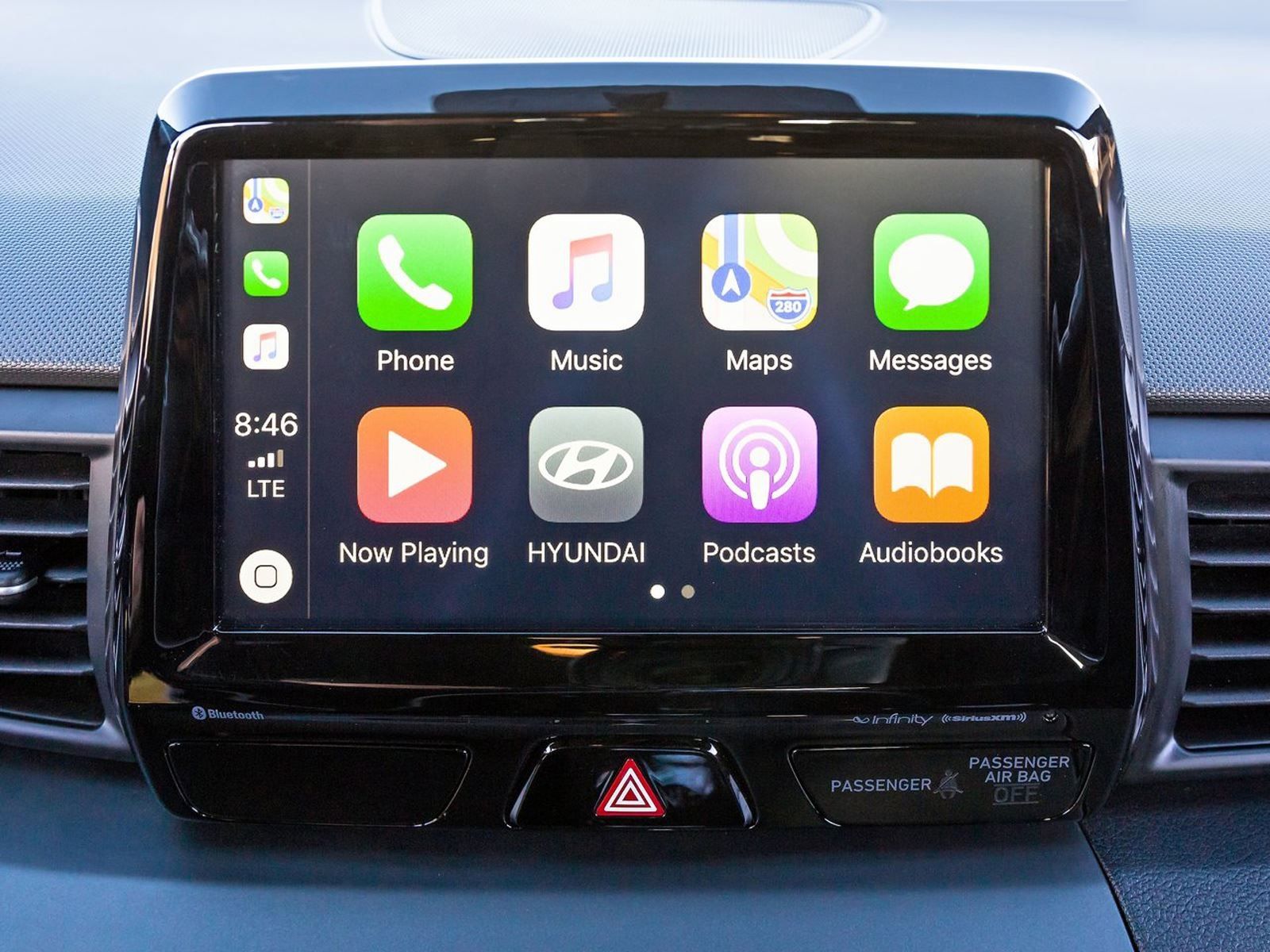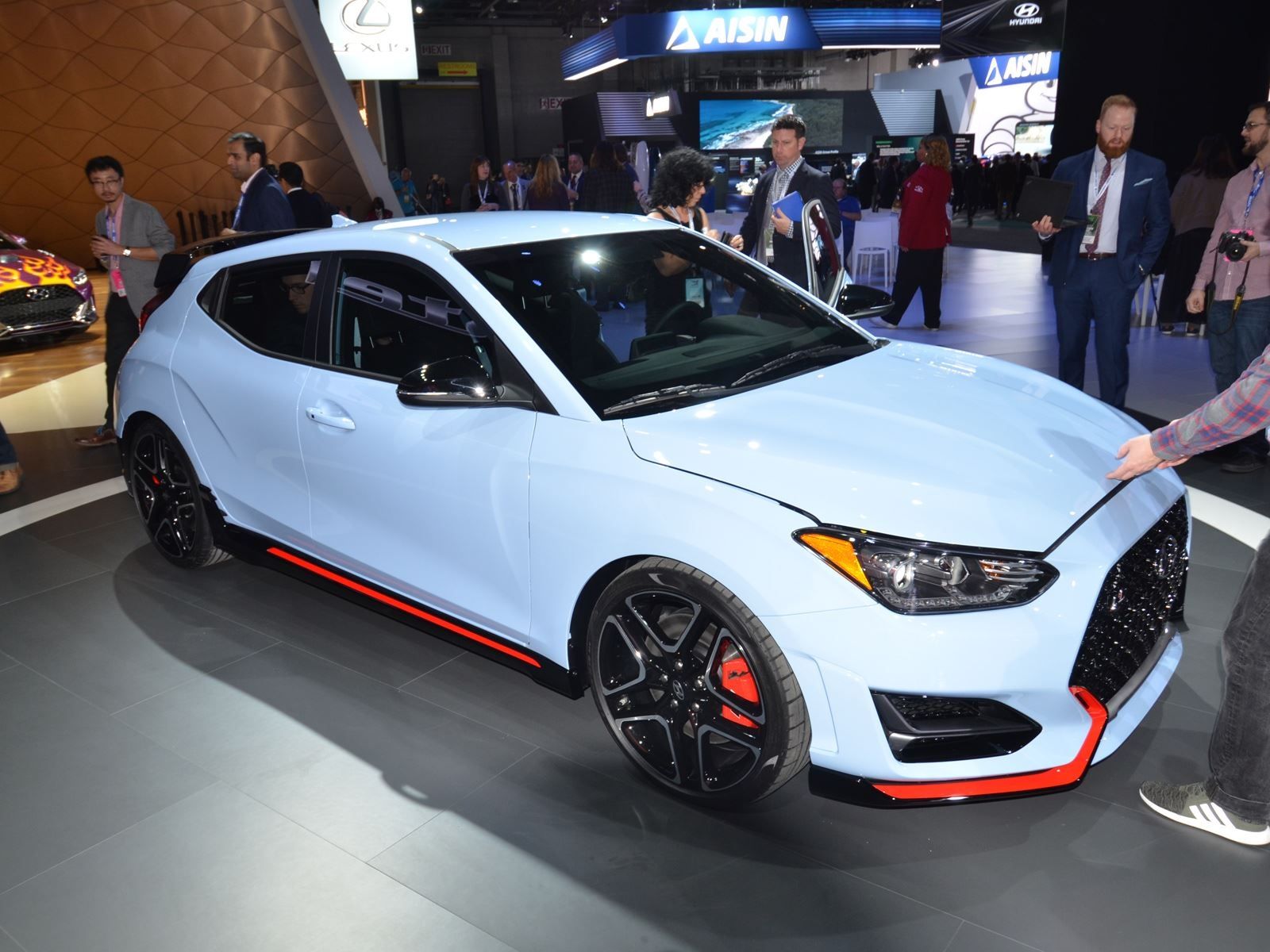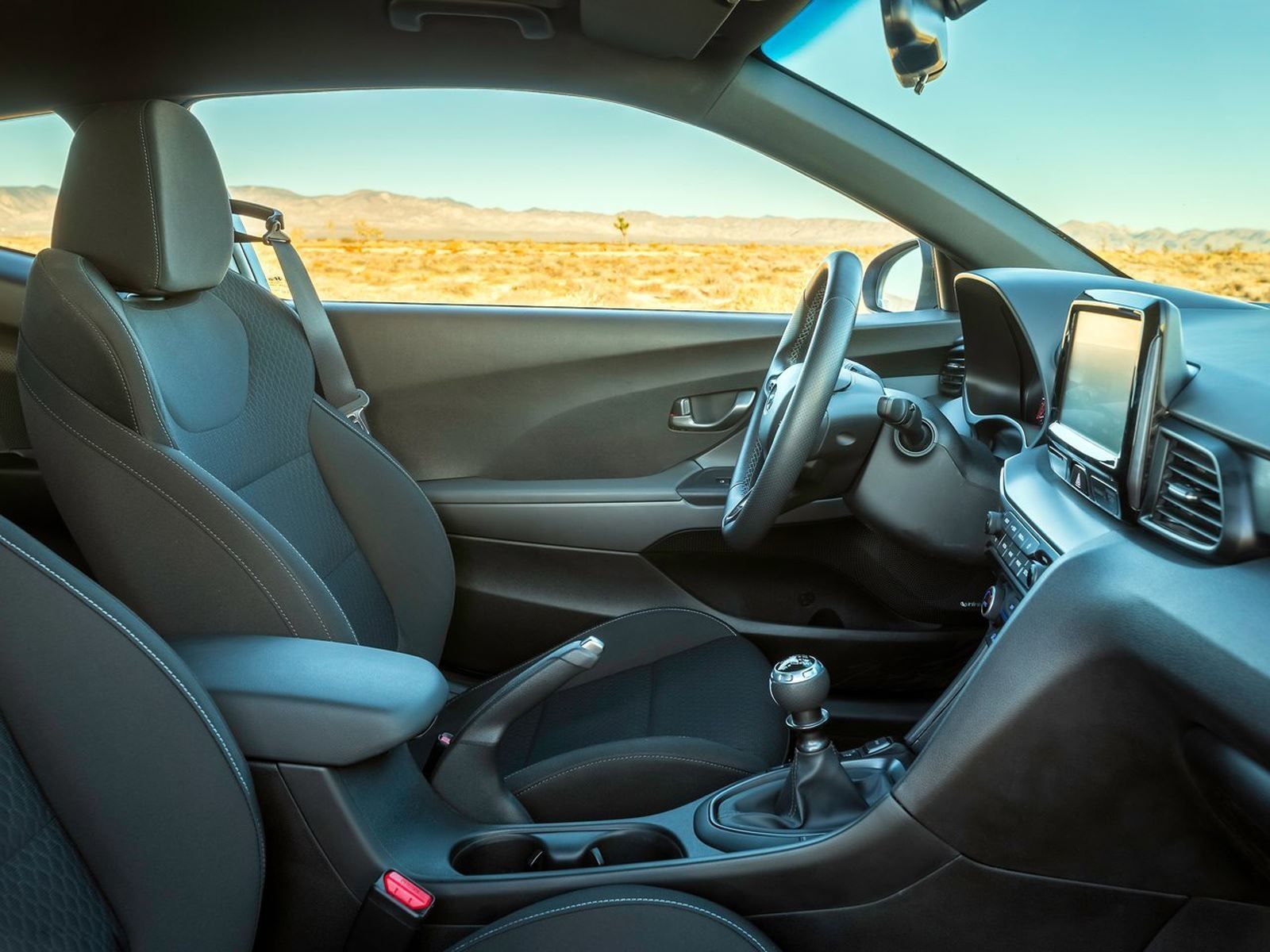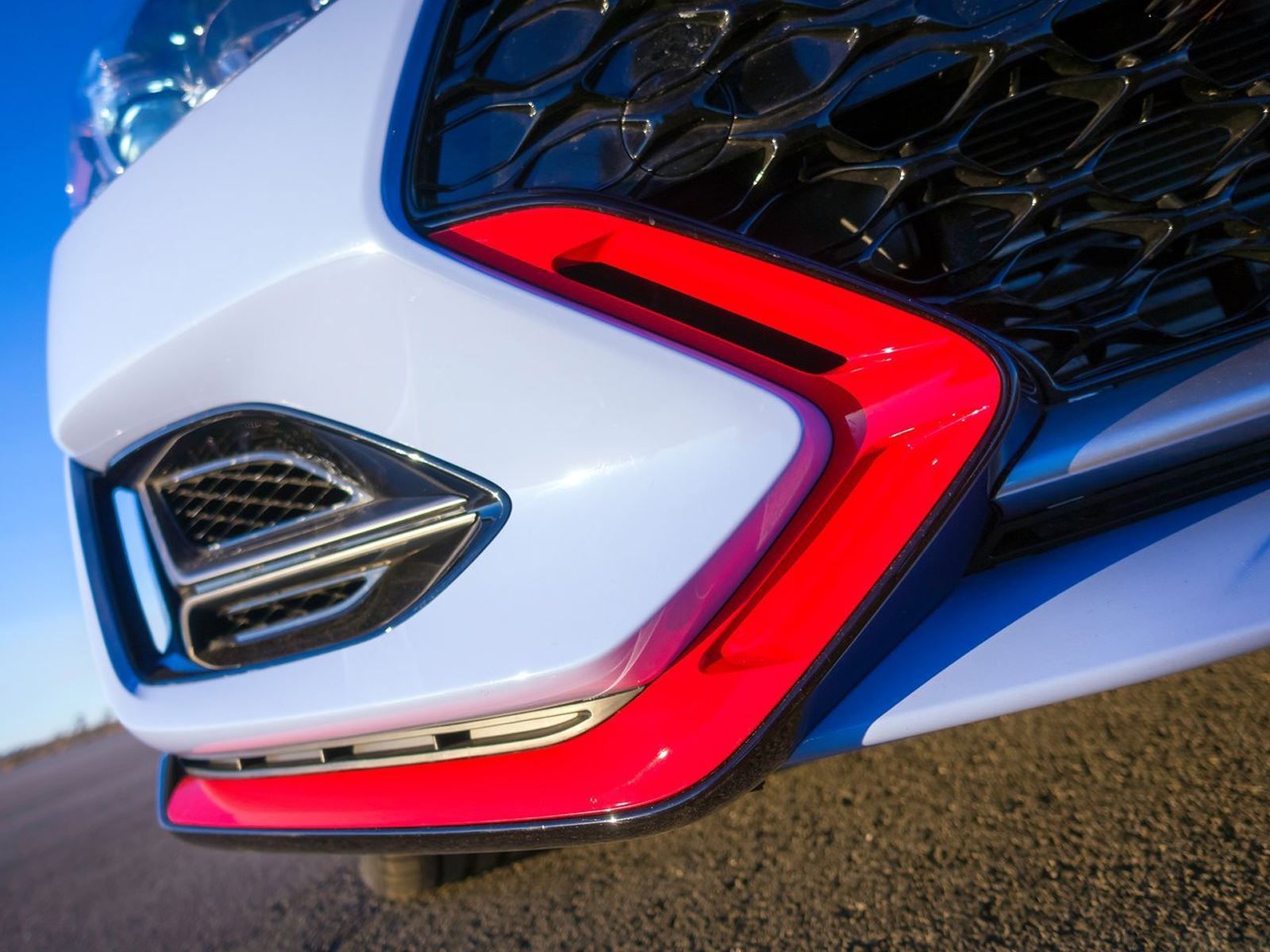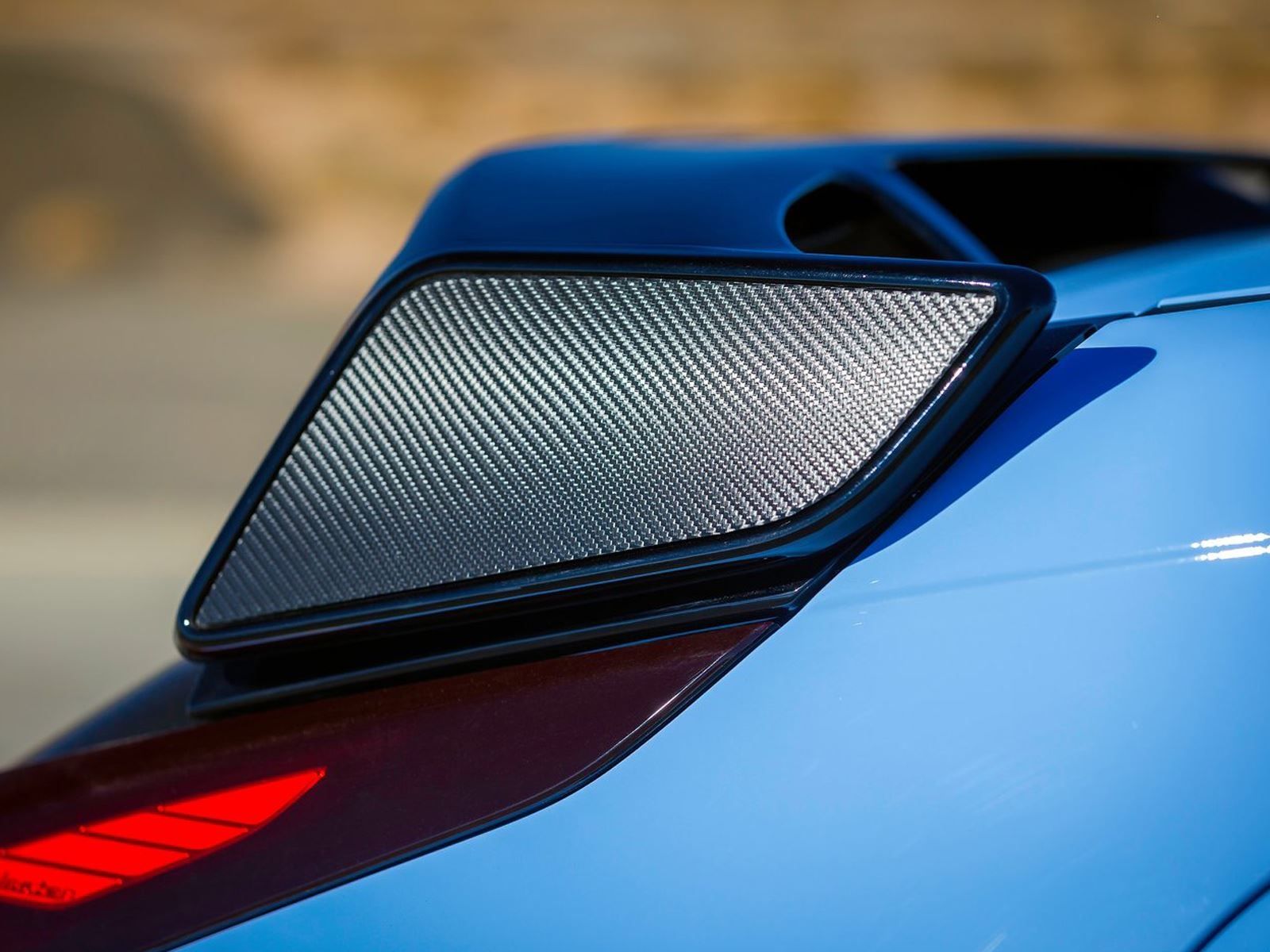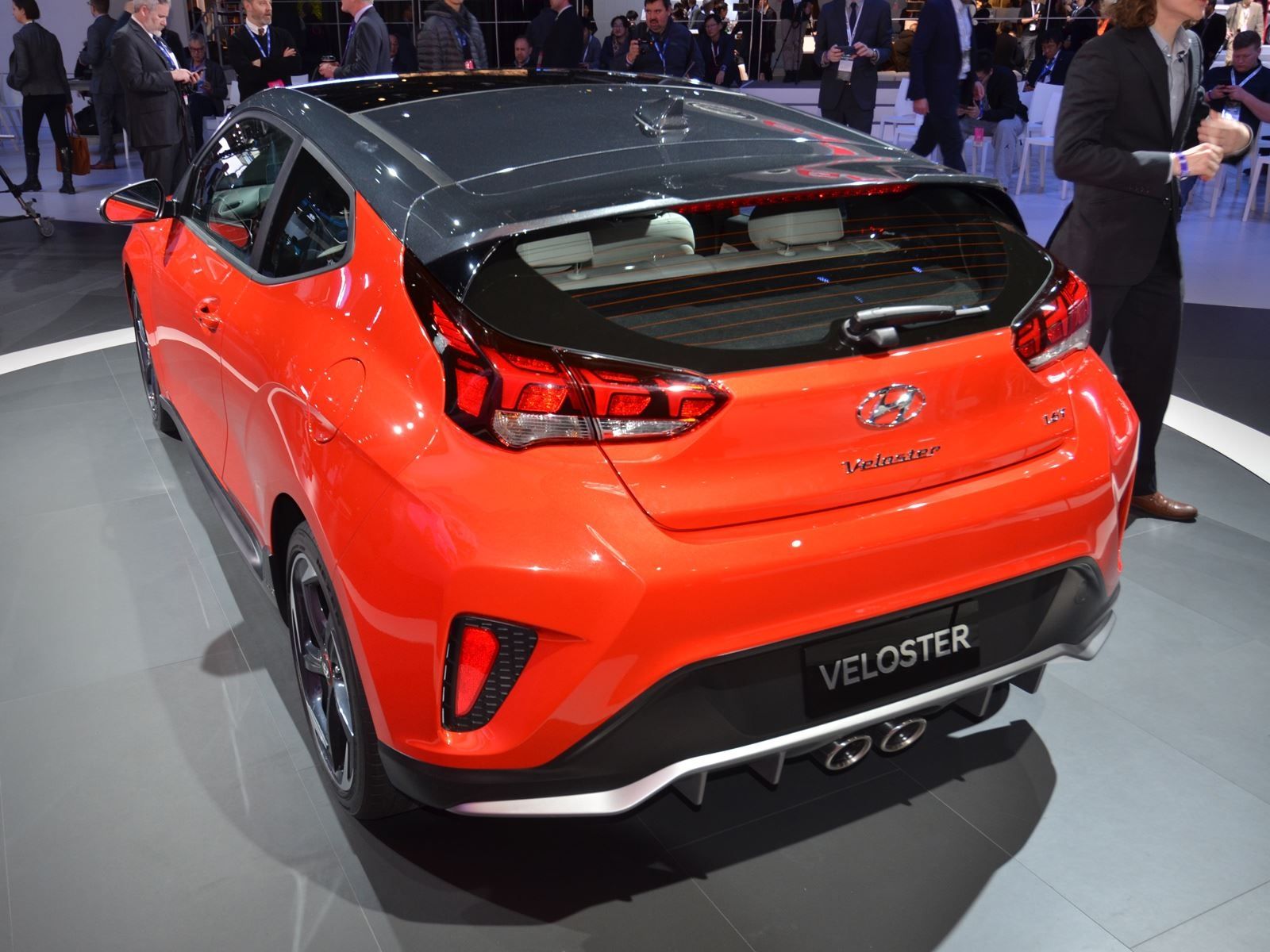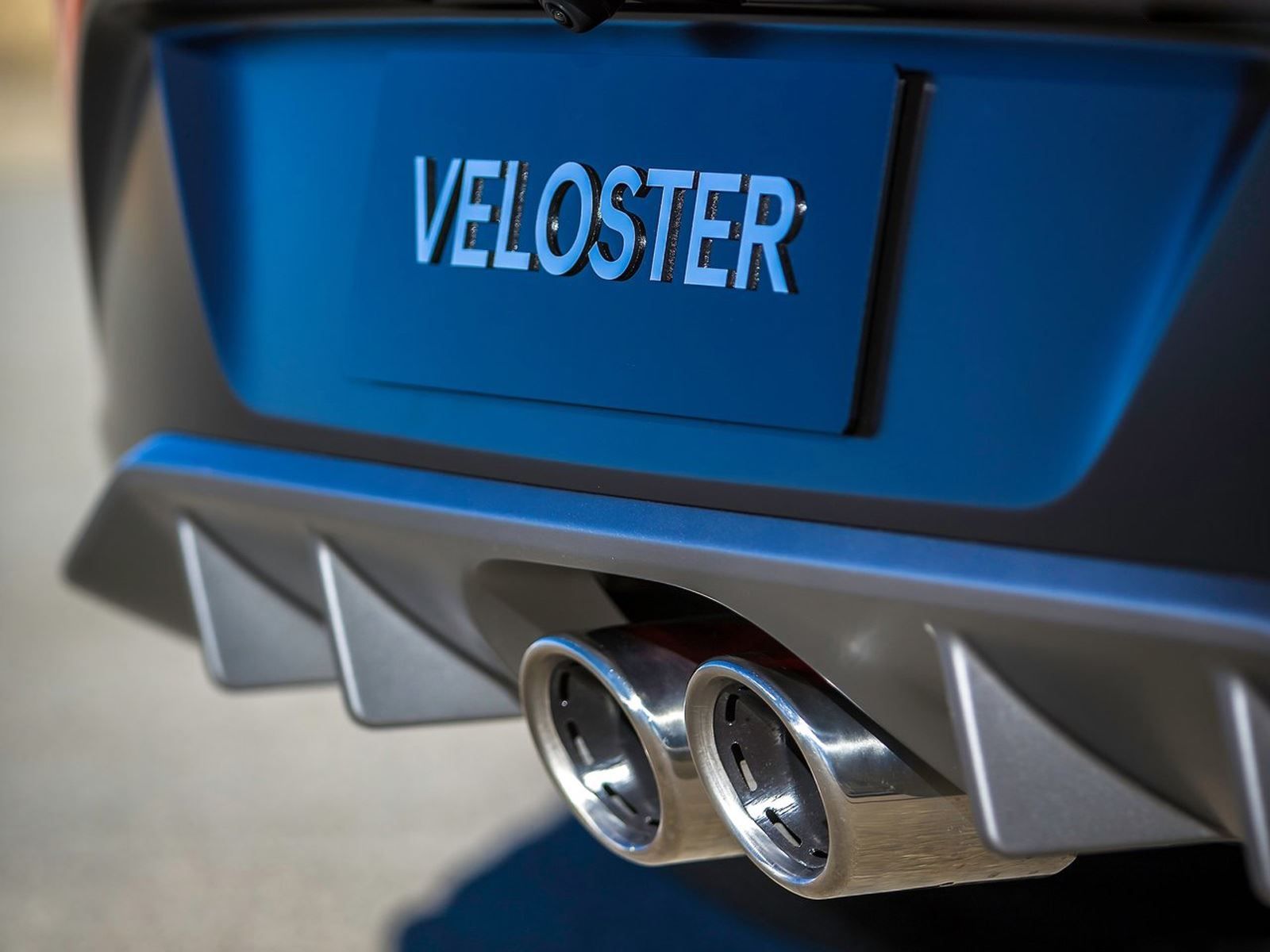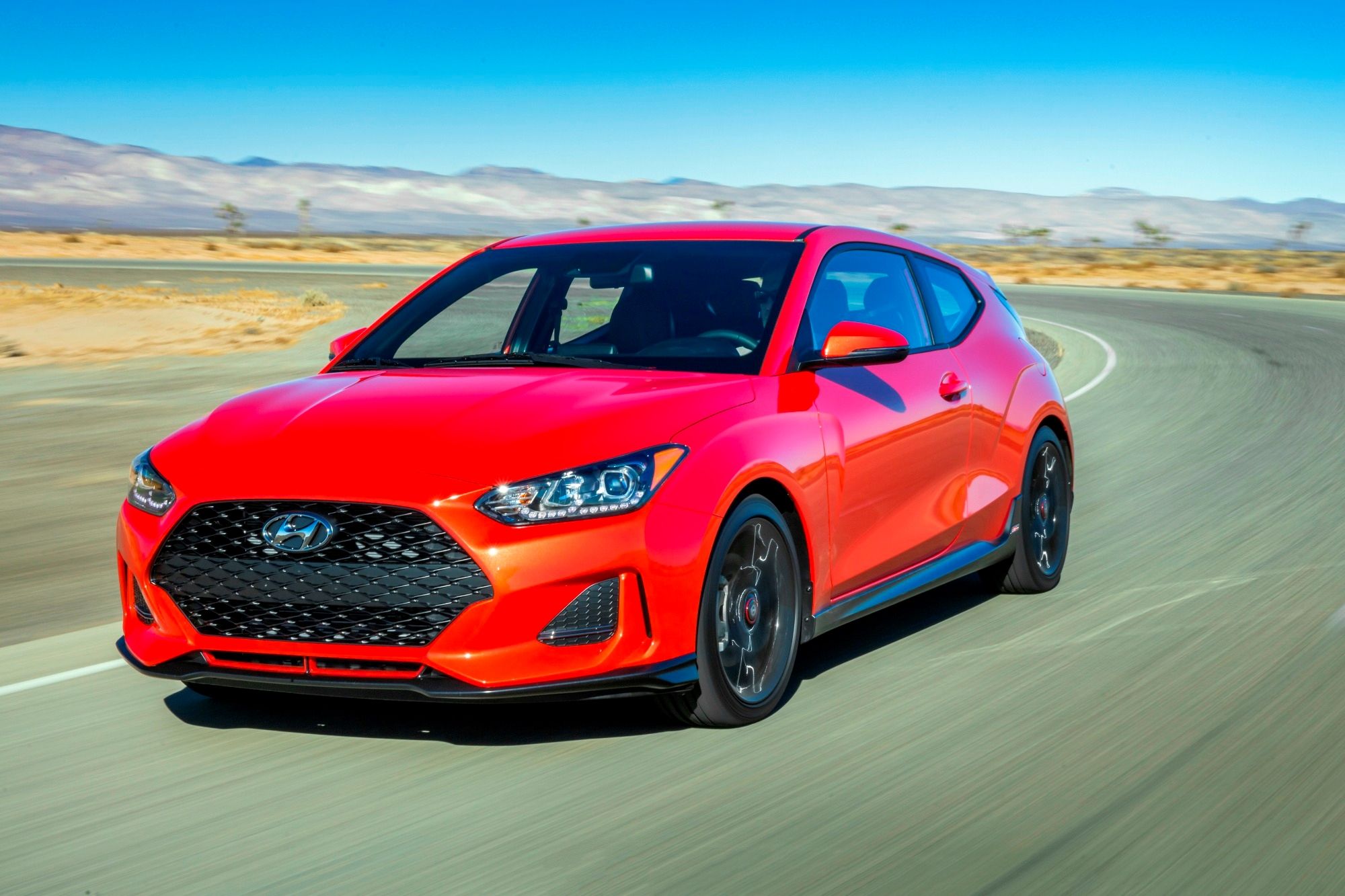
The first generation Hyundai Veloster was a bold styling effort that didn't quite deliver the goods. Access to the rear seat was a bit difficult and it was underpowered, especially the Turbo variant. For 2019, Hyundai aims to correct its past errors with the completely redesign Veloster lineup. In place of the Veloster Turbo, there's the Veloster N, which will kick off the Korea automaker's sub performance N brand in the US.
Making its public debut at the 2018 Detroit Auto Show, the redesigned Veloster comes with a standard 2.0-liter four-cylinder with 147 hp and 132 lb-ft of torque coupled to either a six-speed manual or six-speed automatic. A 1.6-liter turbo four-cylinder with 201 hp and 195 lb-ft of torque is optional and can be paired to either a seven-speed dual-clutch or six-speed manual. And then there's the Veloster N, undeniably the enthusiast's choice. It comes powered by a larger 2.0-liter, direct-injected turbocharged four-cylinder making 275 hp and 260 lb-ft of torque, with power being routed to the front wheels through a six-speed manual only. For now, the seven-speed dual clutch is not an option.
Those who follow Hyundai across the pond will notice the Veloster N has a lot in common with the overseas-only i30 N, and that's a very good thing because it's winning rave reviews for its excellent suspension tuning and overall hot hatch credentials. Veloster N buyers will be treated to performance features such as launch control, downshift rev-matching and a dual-mode exhaust. Its adaptive suspension offers selectable modes, including normal, sport, N, eco and N custom. Each one differentiates throttle response, suspension damping rates, steering feel and yaw-control characteristics. Hyundai also has a secret weapon at its disposal who made this all happen: Dr. Albert Biermann, former head of BMW's M division.
The Veloster N can also be optioned with oversized performance rotors front and rear. From the outside, the Veloster N has a more aggressive look than the regular Veloster trims, thanks to N-exclusive Performance Blue paint and red trim throughout. Of course there are additional colors on the palette to choose from, but Hyundai has designated that particular combo as its N brand signature colors. The Veloster N rides on standard 18-inch wheels with Michelin Pilot Super tires or available 19-inch wheels wearing Pirelli P Zeros. You can also spot the difference between the N and non-N Veloster with the former's large rear spoiler and unique rear fascia design with integrated diffuser.
However, we found the regular Veloster, both turbo and non-turbo, great to look at as well. Overall styling is crisper than its predecessor. Hyundai describes the look as merging "the design appeal of a sport coupe with the versatility of an additional passenger side rear door in an asymmetrical two-plus-one configuration for easier rear-seat access." Along with the optional LED headlights and LED daytime running lights flanking each side of the large grille, we think the updated design language works extremely well. The cabin is equally impressive. The driver-focused interior is available in several colors and the dash layout is very well done.
During our brief time in the display cars, we found the fit and finish to be generally solid. The infotainment system features standard Apple CarPlay and Android Auto. A seven-inch multifunction touchscreen display is also standard. Along with an optional eight-inch display, buyers can tack on wireless charging, HD radio, navigation map and music split-screen display function, and Siri integration for iPhones. There's also Hyundai's Blue Link connectivity system, which allows owners enhanced roadside assistance, car finder, remote door lock and unlock, and can even help locate the car if it ever gets stolen. This is a subscription service offered by the automaker.
As with all new vehicles today, the 2019 Veloster comes with an abundance of standard safety tech, including forward collision warning, lane keep assist, high beam assist and driver attention warning. Blind spot collision warning is optional as is smart cruise control. Fortunately, all new Velosters comes standard with six airbags, four-wheel disc brakes, ABS system, and electronic brake-force distribution, which basically adjusts the braking force to front and rear axles depending on load conditions. Competition in the hatchback and hot hatchback segments is becoming fiercer in the US these days, so Hyundai set its benchmarks high.
Worthy alternatives in this class include the Ford Focus and Focus ST, Volkswagen Golf and Golf GTI, and the new Honda Civic hatchback and Civic Type R. Hyundai has not released official pricing for any of its new Velosters. Going by the outgoing mode, we figure the 2019 Veloster will begin at just under $20,000. Figuring the Focus ST will set you back at least $25,000, the Veloster N will fall somewhere in between the $25,000 to $30,000 range. Hyundai has certainly come a long way in a relatively short amount of time, and the redesigned 2019 Veloster lineup is more proof. Will the base, turbo and Veloster N redefine the segment and set new benchmarks?
It's still too early to tell because we have yet to spend any time behind the wheel. One thing is certain though: Hyundai loves nothing more than to sucker punch the industry giants with more economical, better priced and often times superior new product. We expect the same with the new Veloster.

